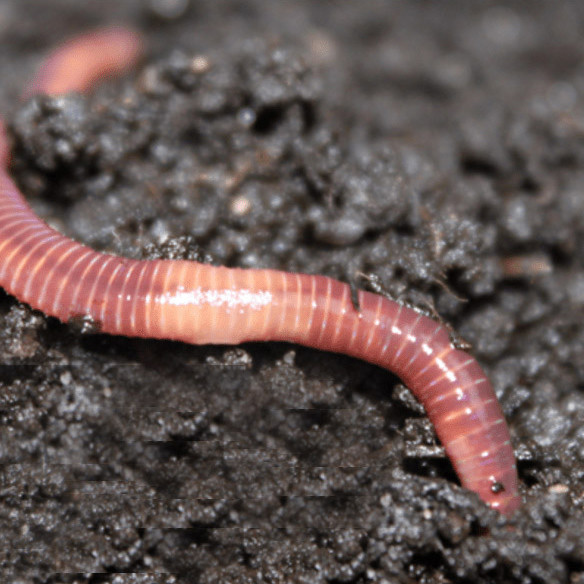Organic red wigglers: Ideal for reducing waste
Organic red wigglers: Ideal for reducing waste
Blog Article
Change Your Yard With Red Wigglers: Tips and Tricks
Red wigglers are not simply an interest for compost fanatics; they are crucial agents of change for any kind of garden. By establishing a basic worm container and recognizing the nutritional requirements of these remarkable animals, garden enthusiasts can considerably enhance dirt high quality and plant wellness. The process of converting natural waste right into rich, fertile spreadings is both simple and rewarding. The true capacity of red wigglers goes beyond plain composting. Exploring the subtleties of their care and the varied applications of their by-products can open even better benefits for your horticulture endeavors.

Benefits of Red Wigglers
Red wigglers, scientifically known as Eisenia fetida, are often hailed as nature's composting champions. These remarkable worms serve several key benefits that can considerably enhance garden health and productivity.

One more noteworthy benefit of red wigglers is their capability to minimize waste. By composting natural products that would certainly or else contribute to land fill waste, they play an essential role in sustainable gardening practices. Incorporating these worms right into your gardening routine can lead to boosted yields, healthier plants, and an extra vibrant garden environment, making them very useful allies for garden enthusiasts seeking to improve their eco-friendly footprint.
Establishing a Worm Container
Creating a worm bin is an important step for any person seeking to harness the advantages of red wigglers in their gardening initiatives. A suitable worm container can be made from various products, including plastic containers, wooden pet crates, or commercially offered worm bins. The very first factor to consider is dimension; a bin that goes to the very least 2 feet wide, 3 feet long, and 1 foot deep is normally optimal for a tiny to medium variety of worms.
It's important to produce a bedding layer, utilizing products such as shredded newspaper, cardboard, or coconut coir to give a comfortable setting for the worms. The bedding must be wet yet not soaked, appearing like a damp sponge - red worms.
Area the bin in a place that preserves a constant temperature, preferably between 55 ° F and 77 ° F. Avoid direct sunshine or extreme cold, as these conditions can damage the worms. As soon as the bin is established, enable the bed linens to choose a few days before introducing the red wigglers, ensuring they have a flourishing setting in which to flourish.
Feeding Your Red Wigglers
When the worm bin is developed and the red wigglers are introduced, appropriate feeding becomes key to preserving a healthy worm populace. Red wigglers thrive on a diverse diet plan, mainly consisting of kitchen scraps and natural materials.
When presenting food, cut the scraps into smaller pieces to help with quicker usage. Furthermore, hide the food under a layer of bedding product to stop fruit flies and other hassles. Screen the feeding frequency; a basic policy is to offer food every 1-2 weeks, relying on the number of worms and the quantity of food waste produced.

Collecting Worm Castings
How can you tell when it's time to collect worm castings from your bin? The preparedness of worm castings is indicated by a few key indicators.
An additional indication is the reduction in worm activity; as the spreadings gather, worms tend to move in the direction of fresher food resources. If you see a decline in worm activity and the visibility of spreadings at the end of the container, it's a clear signal that harvesting schedules.
To gather, gently dig the spreadings, taking treatment to reduce disruption to the worms. A preferred approach entails dividing the spreadings using light; worms have a tendency to delve away from the light, enabling you to collect the spreadings extra quickly.
Gathering consistently, roughly every three to six months, makes sure a regular supply of this nutrient-rich change for your gardening endeavors. Remember, the top quality of your castings directly affects the wellness of your plants.
Utilizing Castings in Your Garden
(red worms for composting)Utilizing worm spreadings in your garden can dramatically enhance soil wellness and plant development - red worms. These nutrient-rich natural plant foods supply vital macro and micronutrients, enhancing the general fertility of your soil. By integrating worm castings into your yard beds, you can advertise advantageous microbial task, which helps in nutrition accessibility and boosts soil link structure
To utilize worm spreadings properly, mix them right into the leading couple of inches of soil before growing. This guarantees that nutrients are conveniently easily accessible to your plants. You can create a nutrient-dense fluid plant food by soaking worm spreadings in water for a week, after that using the resulting "worm tea" directly to your plants. This technique not only provides instant nutrients yet also urges healthy root advancement.
Worm spreadings likewise boost moisture retention within the dirt, minimizing the need for regular watering. Their natural pH equilibrium makes them suitable for various plant types, from veggies to ornamentals. Consistently incorporating worm spreadings into your gardening routine can cause robust plant growth, increased yields, and a total healthier garden ecosystem. Welcome the benefits of worm castings for a flourishing and lasting garden.
Conclusion
By establishing a worm bin, giving appropriate food, and on a regular basis gathering nutrient-rich castings, gardeners can foster a lasting environment. The use of worm castings and "worm tea" even more adds to moisture retention and nutrient availability in the dirt.
Report this page